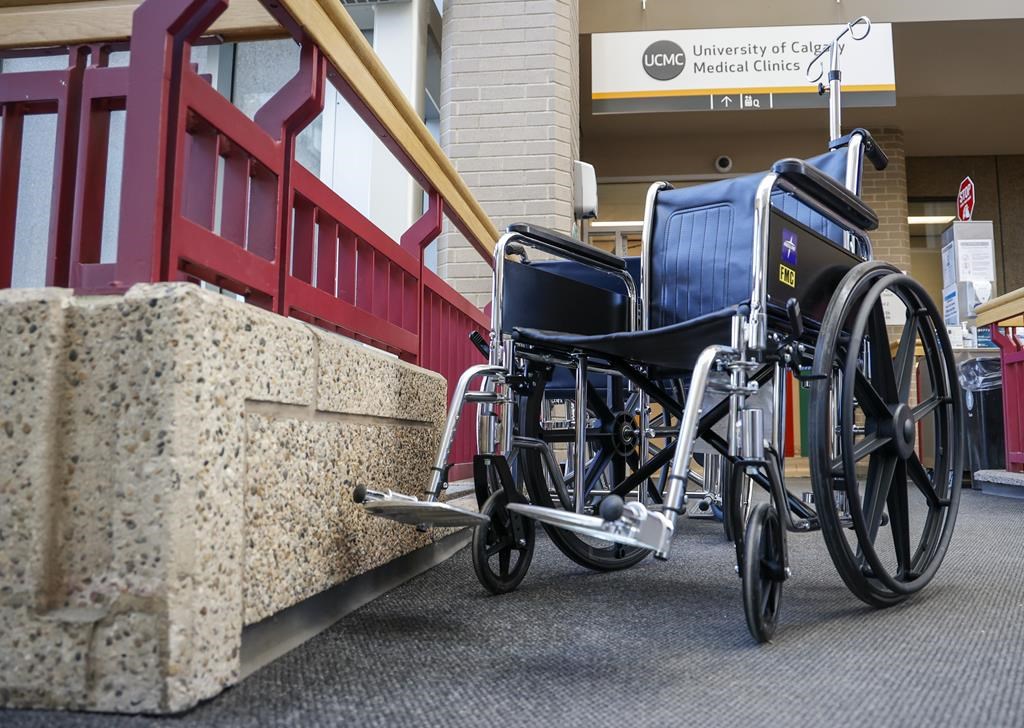TORONTO — Ontario is in a “crisis state” when it comes to accessibility, and it’s a “near certainty” the government will fail to meet its goal of making the province accessible for people with disabilities by 2025, according to a newly released report.

The final report examining the implementation of the Accessibility for Ontarians with Disabilities Act said the declaration of a crisis isn’t meant as an assessment of accessibility in the province, noting several previous reports –including a scathing interim report earlier this year — have already covered that ground.
Instead, it said the declaration is intended to be a “necessary catalyst.”
“It is a near certainty that the goal of an accessible Ontario by 2025 will pass. That does not mean the next years of accessibility regulation, action, and enforcement are not critical,” the report’s author, Rich Donovan, wrote.
“This crisis state, intended to last six months, will allow Ontario to accelerate key overdue processes to get accessibility right in the coming years.”
Within 30 days of the report being tabled, the province must form a crisis committee chaired by Premier Doug Ford and tasked with implementing urgent recommendations, including the creation of a new accessibility agency to enforce accessibility standards within the government, the document said.
Another urgent recommendation for the committee is the creation of clear and consistent emergency response protocols for all provincial government buildings that include the safe and immediate evacuation of all people, regardless of their mobility, vision or other differences.
“At present, emergency procedures for people with disabilities that manage limited vision or mobility often consist of sheltering in place,” the report said.

Get weekly health news
“Given the lack of accessibility of many buildings and the shutting down of lifts during emergencies, there is often no way for some (people with disabilities) to safely evacuate a building.”
The committee must implement the crisis recommendations, or submit a detailed plan for their implementation, within 180 days of its creation, the report said.
Other more long-term recommendations include shifting oversight and enforcement of accessibility in the private sector to the federal government.
“The federal government has tools that can be utilized to solve the logistical hurdle of regulating Ontario’s 380,000 small businesses,” the report said.
For example, the Canada Revenue Agency collects information from small and medium business and audits them, “making it an ideal partner to enforce the accessibility legislation currently under the AODA,” the document said.
“While such a transition would require additional training and resources within the CRA, it is a more efficient means of enforcing accessibility than what currently occurs in Ontario,” it added.
The report is dated June 5 but was tabled in the provincial legislature last week.
When asked about the gap, the Ministry for Seniors and Accessibility said that “given the complexity and expansive scope required when addressing issues around accessibility,” it believed the report “warranted time spent on a thoughtful analysis and response.”
The ministry said it was taking action on a few initiatives as a “first step,” including establishing a volunteer group of people with disabilities to speak on their experience and provide feedback; updating evacuation plans for all government owned and leased buildings to ensure the safe evacuation of people with disabilities; and ensuring all government procurement through Supply Ontario incorporates accessibility standards.
The ministry did not give a timeline for those plans.
Accessibility advocates and opposition legislators criticized the government’s delay in tabling the report.
“Donovan’s final report calls on Premier Ford to immediately establish a crisis committee, chaired by Ford, to oversee urgent reforms over six months,” said David Lepofsky, who chairs the disability consumer advocacy group AODA Alliance.
“But instead of using the past six months to follow this wise recommendation, Premier Ford squandered those months by keeping Donovan’s report secret.”
The AODA Alliance urged the province to reject some of the recommendations in the report, including the proposal to transfer regulation of the private sector to Ottawa.
“It would unfairly force vulnerable Ontarians with disabilities to have to lobby federal MPs from coast to coast just to get new private sector reforms enacted,” Lepofsky wrote in a statement.
New Democrat Monique Taylor, the critic for children, community and social services, said it “speaks volumes” that the government “sat on this report for six months.”
“It’s clear they are not taking it seriously. We need urgent action to address this serious challenge,” she wrote in a statement.
The report noted that 2.9 million people in Ontario currently have a disability.
Ontario’s accessibility law was the first of its kind in Canada when it passed in 2005, with a stated goal of ensuring universal accessibility in the province by Jan. 1, 2025. The report is the fourth review of the law’s implementation.
In his interim report released in March, Donovan, the former chair of the province’s Accessibility Standards Advisory Council, said little progress has been made since the law was passed in 2005. He said that was the result of design flaws in “services, products, technology, buildings, infrastructure, careers, processes and human imagination.”
He noted then that previous reviews had also reported continuous failures, poor outcomes and painfully slow progress.







Comments